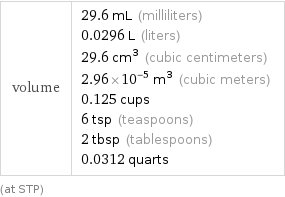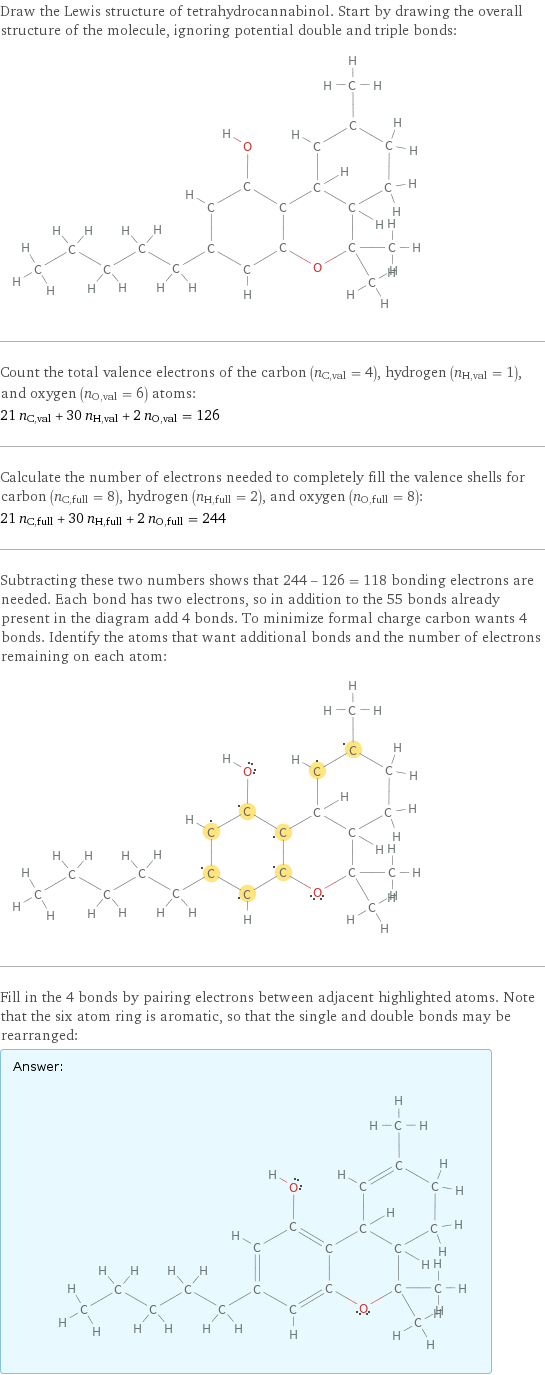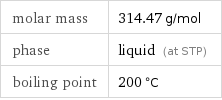Input interpretation

1 fl oz of tetrahydrocannabinol
Basic properties for 1 fl oz

volume | 29.6 mL (milliliters) 0.0296 L (liters) 29.6 cm^3 (cubic centimeters) 2.96×10^-5 m^3 (cubic meters) 0.125 cups 6 tsp (teaspoons) 2 tbsp (tablespoons) 0.0312 quarts (at STP)
Corresponding quantities

sphere radius | 1.918 cm (centimeters) side of a cube | 3.092 cm (centimeters)
Lewis structure

Draw the Lewis structure of tetrahydrocannabinol. Start by drawing the overall structure of the molecule, ignoring potential double and triple bonds: Count the total valence electrons of the carbon (n_C, val = 4), hydrogen (n_H, val = 1), and oxygen (n_O, val = 6) atoms: 21 n_C, val + 30 n_H, val + 2 n_O, val = 126 Calculate the number of electrons needed to completely fill the valence shells for carbon (n_C, full = 8), hydrogen (n_H, full = 2), and oxygen (n_O, full = 8): 21 n_C, full + 30 n_H, full + 2 n_O, full = 244 Subtracting these two numbers shows that 244 - 126 = 118 bonding electrons are needed. Each bond has two electrons, so in addition to the 55 bonds already present in the diagram add 4 bonds. To minimize formal charge carbon wants 4 bonds. Identify the atoms that want additional bonds and the number of electrons remaining on each atom: Fill in the 4 bonds by pairing electrons between adjacent highlighted atoms. Note that the six atom ring is aromatic, so that the single and double bonds may be rearranged: Answer: | |
Chemical names and formulas
![formula | C_21H_30O_2 Hill formula | C_21H_30O_2 name | tetrahydrocannabinol IUPAC name | (6aR, 10aR)-6, 6, 9-trimethyl-3-pentyl-6a, 7, 8, 10a-tetrahydrobenzo[c]chromen-1-ol](../image_source/ab1e5b7a82f227e722a4115fcd423166.png)
formula | C_21H_30O_2 Hill formula | C_21H_30O_2 name | tetrahydrocannabinol IUPAC name | (6aR, 10aR)-6, 6, 9-trimethyl-3-pentyl-6a, 7, 8, 10a-tetrahydrobenzo[c]chromen-1-ol
Substance properties

molar mass | 314.47 g/mol phase | liquid (at STP) boiling point | 200 °C
Units
